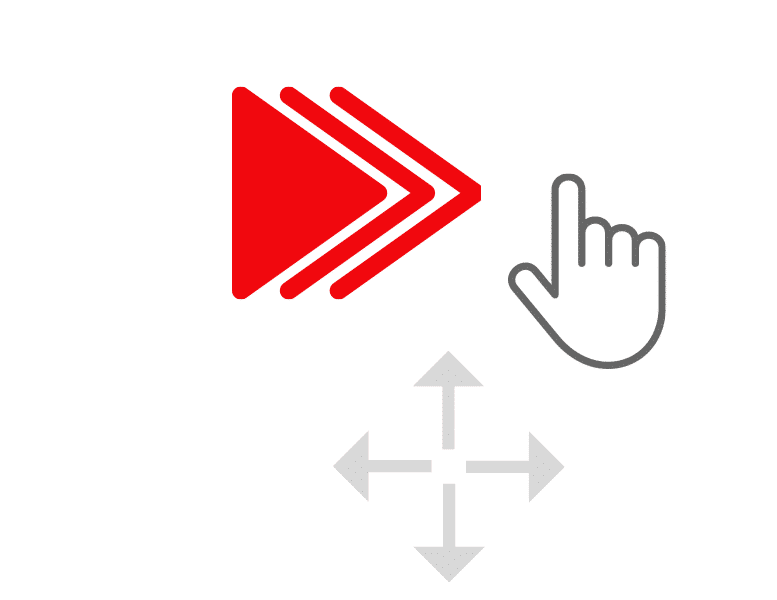In Part 1 of this series, we covered the key elements of a strong ecommerce foundation. Now, it’s time to harness the power of data to optimize your marketing strategy. Data-driven insights allow brands to understand customers better, anticipate their needs, and create highly targeted marketing campaigns.
In this part, we’ll break down:
- Customer segmentation and how it enhances targeting
- Predictive analytics to forecast trends and improve personalization
- CRM systems for centralizing data and refining marketing outreach
- Behavioral analytics tools like heatmaps and session recordings
Leveraging Data-Driven Insights for Growth
E-commerce marketing thrives on actionable insights drawn from data. The ability to analyze, interpret, and act on this information allows you to make smarter decisions, optimize customer experiences, and drive sustainable growth. By harnessing advanced tools and methodologies such as customer segmentation, predictive analytics, and CRM systems, you can transform your marketing strategies and stay ahead of customer needs.
Customer Segmentation: Understanding Your Audience
Customer segmentation helps you categorize your audience into distinct groups based on shared traits like demographics, purchasing behavior, and engagement patterns. This approach enables you to create targeted campaigns that resonate with each group’s unique needs. For instance, repeat customers might appreciate loyalty rewards, while new visitors could be encouraged with introductory offers.
Platforms like Google Analytics, HubSpot, and Klaviyo provide data to segment audiences effectively, allowing you to personalize emails, ads, and on-site experiences. The result? Higher engagement and better conversion rates.
Predictive Analytics: Anticipating Customer Needs
Predictive analytics leverages historical data to forecast customer behavior and optimize business decisions. While this technology can be a game-changer, it’s important to note that advanced tools like IBM Watson, Salesforce Einstein, and Google Cloud AI are typically built for large-scale enterprises with dedicated data teams.
For mid-sized businesses, platforms like Shopify are starting to embed predictive capabilities into their core offering (particularly around inventory and customer behavior), though it often works behind the scenes. For example, Shopify uses data models to help merchants:
- Improve product recommendations based on browsing and purchase patterns.
- Anticipate demand to better manage inventory levels.
- Identify potential churn risks by flagging changes in customer buying behavior.
Outside of e-commerce, predictive analytics has long been a staple in the travel and hospitality industries through revenue management software. Even smaller operators rely on these tools to adjust pricing dynamically and manage capacity based on booking trends. These platforms are built for business users—meaning you don’t need a data scientist to see the benefits.
Predictive analytics enables timely, relevant engagement that boosts customer retention and increases average order value (AOV).

CRM Systems: Data Centralization for Targeted Campaigns
Customer Relationship Management (CRM) systems like HubSpot, Salesforce, or Zoho CRM unify your customer data, providing a comprehensive view of the buyer journey. With a centralized database, you can create personalized campaigns tailored to purchase history and behavior patterns.
For example, if a CRM identifies customers who frequently buy athletic gear, you can send tailored promotions for new sports apparel. Integrating your CRM with marketing platforms ensures consistent messaging across channels.
Enhancing Customer Experience with Behavioral Tools
Tools like heatmaps, click-through data, and session recordings (e.g., Hotjar, Crazy Egg, and Microsoft Clarity) provide valuable insights into how customers interact with your site. These tools help you identify friction points and areas for improvement. For example:
- Heatmaps show which sections attract the most attention. They quickly reveal patterns that might be buried in raw data, helping you spot areas where users linger on your website, where they drop off, or which buttons get ignored.
- Session recordings reveal user navigation patterns and stumbling blocks.
- Click-through data highlights which calls-to-action (CTAs) perform best.
These insights empower you to make data-backed changes that enhance usability and drive conversions.

Critical KPIs for Ecommerce Growth
Measuring success requires tracking key performance indicators (KPIs), including:
- Conversion Rate (CVR): The percentage of visitors who make a purchase.
- Average Order Value (AOV): The average amount spent per transaction.
- Customer Lifetime Value (CLV): The total revenue generated by a customer over time.
Monitoring these metrics helps refine your strategies and ensures your marketing efforts are delivering measurable growth.
Once you have data-backed insights, you can use them to create personalized customer experiences. Part 3 of our series will explore advanced personalization strategies, AI-driven recommendations, and dynamic content that increases engagement and conversions.















